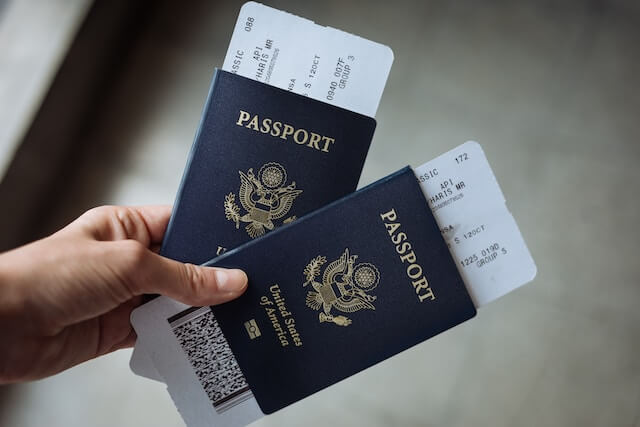Taking advantage of tax deductions is essential to optimize your financial benefits and maximize your return on investment. One crucial aspect of tax deductions for rental properties is tracking travel and mileage expenses.
Let us explore the laws and regulations surrounding travel deductions. You can effectively track your mileage and calculate these deductions to help minimize your tax liability while maintaining accurate records.
Understanding Travel and Mileage Deductions for Rental Properties
The Internal Revenue Service (IRS) allows landlords to deduct certain expenses related to travel and mileage when managing their rental properties. However, it’s important to distinguish between personal and business-related travel. Expenses specifically incurred to manage, maintain, and conduct business activities related to your rental property are eligible for tax deductions. However, personal travel expenses are not.

To claim travel and mileage deductions, your rental property must meet the criteria set by the IRS as an investment property used for profit. It should be clear that the expenses being claimed are directly associated with the rental business; not for personal use.
How to Track Your Mileage
Maintaining accurate records of your mileage is crucial to support your tax deductions. Here are some ways to effectively track your mileage:
- Mileage Log: Keep a dedicated mileage log or use a mobile app that allows you to record the date, starting location, destination, purpose of the trip, and the number of miles traveled for each business-related journey.
- GPS Tracking: Utilize GPS tracking apps or devices to automatically record your travel routes and distances. These tools can simplify the process of tracking your mileage and ensure accuracy.
- Document Business Purposes: Clearly document the business purpose of each trip. For rental property owners, business purposes may include visiting the property for inspections, repairs, rent collection, and meetings with tenants or contractors.
Calculating Mileage Deductions
There are two methods to calculate mileage deductions: the Standard Mileage Rate method and the Actual Expense method.
The Standard Mileage Rate Method
The Standard Mileage Rate method allows you to deduct a fixed amount per mile. The amount is determined by the IRS each year. For the tax year 2023, the standard mileage rate is 65.5 cents per mile for business-related travel.
Simply multiply your business miles by the usual mileage rate to determine your deduction. For instance, if you traveled 5,000 business miles in 2023, multiplying that number by 0.655 would result in a $3,275 mileage tax deduction.
Along with cars powered by gasoline and diesel, these prices also apply to hybrid and electric vehicles.
Business-related parking costs and tolls, interest on a car loan, and registration or license fees are some other vehicle expenses you can deduct in addition to mileage. To be eligible to use the regular mileage rate moving forward, you must use a car for your rental activity during the first year. The usual mileage rate should provide you with sizable savings unless your car has high operational costs.

The Actual Expense Method
Alternatively, the Actual Expense method involves calculating the actual costs associated with your rental property’s business-related travel. This includes expenses such as gas, oil, maintenance, insurance, and depreciation of the vehicle. Keep in mind that once you choose a method, you must stick with it for the entire tax year.
As you must additionally keep track of your spending on gas, oil, maintenance, tires, insurance, and other car operational expenses, this is a little more complicated than utilizing the standard mileage rate method.
This technique of deducting expenses has the drawback of requiring extra record-keeping, so it might not be worthwhile if you don’t drive much for work-related purposes. However, it can result in significant tax savings if done correctly, and/or if your car has greater operating costs than average.
Other Deductible Travel Expenses
In addition to mileage deductions, there are other travel-related expenses that you may be eligible to deduct. These include:
- Airfare and Transportation: If you need to travel by air or other modes of transportation to visit your rental property or conduct business related to it, these expenses can be deducted.
- Accommodation: If you incur overnight accommodation expenses while conducting rental property business away from your tax home, such as attending a conference or inspecting properties in another city, these expenses are deductible.
- Meals: The cost of meals during business-related travel may be partially deductible. Generally, you can deduct 50% of the actual meal expenses incurred while on rental property business.

Staying Compliant with Tax Laws
To stay compliant with tax laws, it’s crucial to maintain detailed and accurate records of all your travel-related expenses. Keep receipts, invoices, and any supporting documentation to substantiate your deductions in case of an IRS audit. Organize your records throughout the year to make tax preparation more manageable.
Tracking travel and mileage deductions for rental properties is a crucial aspect of optimizing your tax benefits as a landlord. By understanding the laws surrounding these deductions, implementing effective tracking methods, and staying organized with your records, you can confidently claim legitimate deductions and minimize your tax liability.
Now that you can save up on tax deductions, you can allocate your budget to other income-generating aspects of your rental property. Like in marketing your property, for instance. Use platforms like Padleads to publish your listing. Syndicate the listing to popular websites so that more potential renters can see it. Doing so would help you fill a vacancy in a shorter amount of time.